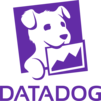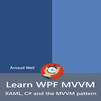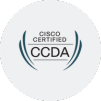-interview-questions-answers.jpg)
The Certified Kubernetes Administrator (CKA) training equips participants with the knowledge and skills to manage Kubernetes environments effectively. This comprehensive course covers core concepts, including installation, configuration, and troubleshooting of Kubernetes clusters. Participants will also learn about networking, storage, security, and monitoring in Kubernetes. Hands-on labs and real-world scenarios prepare candidates for the CKA exam, ensuring they are ready to tackle real-world Kubernetes challenges.
Certified Kubernetes Administrator (CKA) Interview Questions Answers - For Intermediate
1. What is Kubernetes?
Kubernetes is an open-source container orchestration platform used for automating the deployment, scaling, and management of containerized applications.
2. What are Pods in Kubernetes?
Pods are the smallest deployable units in Kubernetes, consisting of one or more containers that share resources such as networking and storage.
3. How do you create a Pod in Kubernetes?
Pods can be created using YAML or JSON configuration files that specify the pod's properties such as containers, volumes, and metadata.
4. What is a Deployment in Kubernetes?
A Deployment is a Kubernetes resource used to manage the deployment and scaling of replica Pods, ensuring high availability and rolling updates.
5. How do you scale a Deployment in Kubernetes?
We can scale a Deployment by updating its replica count using the kubectl scale command or by modifying the replicas field in the Deployment manifest.
6. What is a Service in Kubernetes?
A Service is an abstraction that exposes a set of Pods as a network service, enabling communication between different parts of an application within a Kubernetes cluster.
7. How do you expose a Deployment as a Service in Kubernetes?
We can expose a Deployment by creating a Service resource and specifying the selector to target the Pods belonging to the Deployment.
8. What is a Namespace in Kubernetes?
Namespaces are virtual clusters within a Kubernetes cluster, used to divide cluster resources among multiple users or teams.
9. How do you list all Pods running in a Kubernetes cluster?
We can list all Pods using the kubectl get pods command.
10. What is a ConfigMap in Kubernetes?
ConfigMaps are Kubernetes resources used to store configuration data in key-value pairs, which can be consumed by Pods as environment variables or mounted as volumes.
11. What is a Secret in Kubernetes?
Secrets are Kubernetes resources used to securely store sensitive information such as passwords, API keys, and certificates within the cluster.
12. How do you create a Secret in Kubernetes?
Secrets can be created using YAML or JSON configuration files or by using the kubectl create secret command.
13. What is a StatefulSet in Kubernetes?
StatefulSets are Kubernetes resources used to manage stateful applications by providing stable network identities, persistent storage, and ordered deployment and scaling.
14. What is a PersistentVolume in Kubernetes?
PersistentVolumes are Kubernetes resources used to abstract underlying storage systems, allowing Pods to request and use persistent storage independently of the underlying infrastructure.
15. How do you create a PersistentVolumeClaim in Kubernetes?
PersistentVolumeClaims are Kubernetes resources used by Pods to request access to persistent storage. They can be created by defining a PersistentVolumeClaim resource in a YAML or JSON configuration file.
16. What is the difference between a DaemonSet and a Deployment in Kubernetes?
Deployments are used to manage stateless applications with multiple replicas, while DaemonSets are used to ensure that a single Pod runs on every node in the cluster.
17. What is a Helm chart in Kubernetes?
Helm charts are packages of pre-configured Kubernetes resources, used to simplify the deployment and management of complex applications in Kubernetes.
18. How do you troubleshoot a Pod that is not starting in Kubernetes?
We can troubleshoot a Pod by checking its logs using the kubectl logs command, describing the Pod using the kubectl describe command, and examining events related to the Pod using the kubectl get events command.
19. What is a Kubernetes Operator?
Kubernetes Operators are software extensions that encapsulate operational knowledge for managing complex, stateful applications in Kubernetes, automating tasks such as deployment, scaling, and failure recovery.
20. How do you upgrade the Kubernetes version in a cluster?
We can upgrade the Kubernetes version in a cluster by following the official upgrade guides provided by the Kubernetes documentation, which typically involve upgrading the control plane components first followed by the worker nodes, and ensuring compatibility with the applications and add-ons.
Certified Kubernetes Administrator (CKA) Interview Questions Answers - For Advanced
1. Explain how Kubernetes handles high availability and failover.
Kubernetes ensures high availability and failover through a combination of its architecture and various built-in components. The control plane, consisting of the API server, etcd, controller manager, and scheduler, is typically deployed in a highly available manner across multiple nodes. Etcd, the key-value store, is often set up with a quorum of nodes to ensure data consistency and availability. In the event of node failures, Kubernetes uses controllers such as ReplicaSets to ensure that the desired number of pod replicas are always running. If a node fails, the scheduler will automatically reschedule the pods on other available nodes. Additionally, Kubernetes supports multi-zone and multi-region deployments to further enhance availability and disaster recovery capabilities.
2. Describe the process of upgrading a Kubernetes cluster.
Upgrading a Kubernetes cluster involves several steps to ensure minimal downtime and consistency across the cluster. The process typically starts with upgrading the control plane components. The API server is upgraded first, followed by the controller manager and scheduler. Once the control plane is upgraded, the etcd database is updated. After the control plane is stable, the nodes are upgraded. This can be done by draining a node (which safely evicts all pods), upgrading the kubelet and kube-proxy, and then uncordoning the node to bring it back into the cluster. This process is repeated for all nodes. Kubernetes also provides tools like kubeadm to simplify and automate the upgrade process.
3. How does Kubernetes manage resource limits and quotas?
Kubernetes manages resource limits and quotas through ResourceQuotas and LimitRanges. ResourceQuotas are applied at the namespace level and ensure that the aggregate resource usage does not exceed specified limits. For example, ResourceQuotas can limit the number of pods, services, or the total amount of CPU and memory used within a namespace. LimitRanges, on the other hand, are used to enforce minimum and maximum resource limits on individual containers within a namespace. They ensure that containers do not exceed defined resource limits, preventing any single container from monopolizing cluster resources. These mechanisms help in resource planning, ensuring fair usage, and preventing resource contention.
4. What are the different types of services in Kubernetes, and how do they differ?
Kubernetes offers several types of services to abstract and manage network access to a set of pods:
- ClusterIP: The default service type, accessible only within the cluster. It exposes the service on a cluster-internal IP, making it reachable only from within the cluster.
- NodePort: Exposes the service on a static port on each node's IP. It makes the service accessible from outside the cluster by requesting <NodeIP>:<NodePort>.
- LoadBalancer: Integrates with cloud provider load balancers to expose the service externally. It automatically creates a load balancer and forwards external traffic to the service.
- ExternalName: Maps a service to a DNS name, which acts as an alias for an external service. It does not create a proxy but allows Kubernetes to return a CNAME record with the specified external name.
Each service type addresses different use cases, from internal cluster communication to exposing services to external clients.
5. Discuss the role and configuration of Network Policies in Kubernetes.
Network Policies in Kubernetes are used to control the traffic flow between pods and other network endpoints. They are implemented using the Kubernetes Network Policy API, which allows administrators to define rules that specify how pods are allowed to communicate with each other and other network entities. A Network Policy is defined in YAML format and includes specifications such as pod selectors, ingress rules, and egress rules. Pod selectors determine which pods the policy applies to, while ingress and egress rules define the allowed sources and destinations for traffic. By default, pods are non-isolated and accept traffic from any source. Applying a Network Policy restricts traffic to only what is explicitly allowed, enhancing security and compliance within the cluster.
6. Explain the differences between StatefulSets and Deployments in Kubernetes.
StatefulSets and Deployments are both Kubernetes controllers used to manage the deployment and scaling of pods, but they serve different purposes:
- Deployments: Used for stateless applications, where the state is not retained between pod restarts. Deployments ensure that the desired number of identical pods are running and can update them with rolling updates, rollback, and scaling. Pods in a Deployment are interchangeable, with no guarantees about ordering or uniqueness.
- StatefulSets: Designed for stateful applications, where each pod has a unique identity and stable network identity. StatefulSets maintain a persistent identity for each pod, ensuring they are started in a specific order and retain their identities across rescheduling. This is crucial for applications that require stable storage or consistent network identifiers, such as databases.
Choosing between the two depends on whether the application requires stable storage and unique identifiers (StatefulSets) or is fully stateless and can be managed with generic, interchangeable pods (Deployments).
7. How does Kubernetes handle secrets, and what are the best practices for managing them?
Kubernetes manages secrets using the Secret object, which allows storing and managing sensitive information such as passwords, OAuth tokens, and SSH keys. Secrets can be created manually or automatically and are mounted into pods as files or environment variables. Kubernetes stores secrets in etcd, which should be encrypted at rest to enhance security.
Best practices for managing secrets in Kubernetes include:
- Enabling encryption at rest etc.
- Using RBAC to restrict access to secrets.
- Limiting the use of secrets as environment variables to reduce exposure.
- Regularly rotating and updating secrets.
- Using external secret management solutions, such as HashiCorp Vault or AWS Secrets Manager, to manage and inject secrets into the cluster securely.
8. What is the Horizontal Pod Autoscaler (HPA), and how does it work?
The Horizontal Pod Autoscaler (HPA) in Kubernetes automatically scales the number of pod replicas in a deployment, replica set, or stateful set based on observed CPU utilization or other select metrics. HPA continually monitors the specified metric (e.g., average CPU usage) and adjusts the number of replicas to match the desired target utilization.
The HPA controller queries the metrics API for the current value of the specified metric, calculates the desired number of replicas based on the target, and updates the resource's replica count accordingly. HPA supports custom metrics and external metrics, allowing scaling based on application-specific indicators or external data sources. Properly tuning HPA settings and thresholds ensures optimal resource usage and application performance.
9. How can you secure a Kubernetes cluster?
Securing a Kubernetes cluster involves several layers and best practices:
- Network Security: Implement network policies to control traffic flow between pods and services. Use firewalls and VPNs to secure communication between nodes.
- Authentication and Authorization: Use Role-Based Access Control (RBAC) to enforce fine-grained access controls. Integrate with identity providers for centralized authentication.
- Secrets Management: Store sensitive data in Kubernetes Secrets, encrypt secrets at rest, and use external secret management tools.
- Audit Logging: Enable audit logging to monitor and record cluster activities, helping in identifying potential security incidents.
- Pod Security Policies: Define and enforce security policies for pods, such as restricting privileged containers and ensuring read-only root file systems.
- Regular Updates: Keep Kubernetes and its components up to date with the latest security patches and releases.
- Image Security: Use trusted sources for container images, scan images for vulnerabilities, and enforce image policies.
10. What is etched in Kubernetes, and how does it work?
Etcd is a distributed key-value store that Kubernetes uses as its primary data store. It stores all cluster data, including configuration details, state, and metadata. Etcd is a critical component of the Kubernetes control plane, ensuring consistency and reliability across the cluster.
Etcd operates using a consensus algorithm called Raft, which ensures data is consistently replicated across multiple nodes. This replication provides fault tolerance and high availability, as the cluster can continue functioning even if some etcd nodes fail. Etcd uses a watch mechanism to notify clients of changes to stored data, enabling real-time updates and synchronization across the cluster.
Properly managing and securing etcd is crucial for the stability and security of a Kubernetes cluster. Best practices include deploying etcd in a highly available configuration, securing communication with TLS, and regularly backing up etcd data to prevent data loss.
Course Schedule
| Nov, 2025 | Weekdays | Mon-Fri | Enquire Now |
| Weekend | Sat-Sun | Enquire Now | |
| Dec, 2025 | Weekdays | Mon-Fri | Enquire Now |
| Weekend | Sat-Sun | Enquire Now |
Related Courses
Related Articles
- Data Analytics Courses for The Beginners
- Kronos Workforce (UKG) Dimensions: A Complete Guide for HR and Business Leaders
- What Makes Certified Planning and Inventory Management Training Popular?
- Amazon Web Services (AWS) Cloud Computing: Learn best Course for Career
- 10 Mind-Blowing Features in Blue Prism Robotic Automation
Related Interview
Related FAQ's
- Instructor-led Live Online Interactive Training
- Project Based Customized Learning
- Fast Track Training Program
- Self-paced learning
- In one-on-one training, you have the flexibility to choose the days, timings, and duration according to your preferences.
- We create a personalized training calendar based on your chosen schedule.
- Complete Live Online Interactive Training of the Course
- After Training Recorded Videos
- Session-wise Learning Material and notes for lifetime
- Practical & Assignments exercises
- Global Course Completion Certificate
- 24x7 after Training Support














 Join our Live Instructor-Led online classes delivered by industry experts
Join our Live Instructor-Led online classes delivered by industry experts